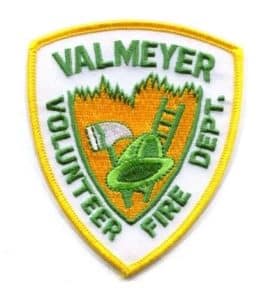Drones creating buzz in variety of ways
A drone was once just a monotonous sound, but not anymore. Drones are unmanned aerial devices that offer a multitude of positive uses. Unfortunately, at the same time, they pose potential dangers.
Drones are not really new. A 2012 international convention for the devices in Las Vegas attracted some 567 exhibitors.
The military has sought to perfect them, mostly to limit exposure of humans to dangerous situations, or to make undetected observations. More recently, drones have carried offensive firepower onto the battlefield.
In recent months, encounters between aircraft and drones, crashes into crowds and just last week, of a flurry of possible federal regulations to register them and control their use, have vaulted them into front page news.
Just recently, Walmart followed the lead of Amazon and other retailers in asking for permission to test drones for making deliveries to customers in its parking lots and at customers’ homes.
In the midst of the controversy, there are numerous examples of law-abiding citizens enjoying drones in creative manners, capturing beautiful aerial photos and enjoying these devices well away from potential dangers. They are performing much as radio-control airplane enthusiasts have for decades.
One such local person is Waterloo’s Rich Lyons of Lyons Tech Consulting. Lyons’ main business has been information technology, but he is branching out.
Inventories are usually conducted by counting items or reviewing records. But how do you define and manage holdings when they are largely piles of material spewed from conveyer belts into veritable mountains – things like large piles of gravel and rock?
In the past, estimating the volume of such material required a grueling manual measurements and laborious calculations.
Lyons has an answer for quarry operators and others with large piles of material they need to know volumes of. And the answer is available quickly, more precisely and with fewer hours of tedious labor.
He overflies the piles with a precision, camera-equipped drone, developing an image with precise locations and elevations. Images gathered are then downloaded into a computer program that reads data from each one and plots accurate locations and elevations. This, in turn, allows precise calculations of the volume of the pile – how many cubic yards of material is in each one. The results are provided swiftly and accurately.
Lyons got interested in the possibilities of this drone-computer marriage when he watched a video showing an early version of the technology about two years ago.
“I have a friend who operates a system of quarries. I sent him the video and asked him if this was a good idea. He was very interested. He agreed to give me access to his facilities to try to develop the process,” he said.
Lyons illustrated the speed of his process.
“I surveyed a quarry Saturday, and with 20 minutes of flight time and an hour of computer processing, I had a very accurate figure for his inventory. It would have taken two persons at least two days the old way, and my numbers are more accurate,” he said.
In addition to being faster, better and cheaper, this process is much safer.
“I sent my drone into the air, it flew a route dictated by the software, taking high resolution images and gathering precise data. I stood in complete safety, monitoring the process. Then I blended the data with existing Google Maps data and generated a visual display with all the required measurements,” Lyons said.
Lyons emphasized that his drone must have specific apps installed, which work in tandem with his computer and its software.
“A drone without the apps is like a computer without software,” he said.
Another emerging use includes for agriculture, to survey land contours and drainage and erosion patterns. Using infrared spectrum images may also be a good way to assess crop development.
Law enforcement and other emergency responders have brought drones to bear in recent months as well. One example was their use in fighting forest fires in the west. But the legitimate use there was tempered by others whose drones threatened aerial firefighting efforts.
Monroe County Sheriff Neal Rohlfing says he certainly sees uses for drones, but his department does not have any at this time.
“I can ask for drone support from some area firefighting agencies, though,” he said.
In fact, a drone was employed in June when a young girl from Mt. Vernon went missing near Camp Wartburg.
“It enabled us to search surrounding corn fields swiftly and efficiently,” Rohlfing said.
In addition to being able to peer down into corn that was already over head high, it provided valuable support with high temperatures at the time.
“Searching on foot can be exhausting, and drones don’t get hot,” he said.
Drones are also emerging with the ability to shoot infrared images, including heat signatures.
Rohlfing said he could envision other uses.
“A hostage situation might be one,” he said. “You might want to limit the visibility of a police presence or limit danger to officers. I’d much rather lose a $20,000 drone than have an officer shot,” he said.
Concerning the call for federal regulations, Lyons thinks they are necessary.
“We need to protect safety and privacy from those who would misuse these devices,” he said.
In fact, Lyons is awaiting response from the FAA any day now on his requesting for what is called a “Section 333 Exemption.” This is required by law for anyone “monetizing” use of a drone – using them to make money.
The use Lyons is making is an emerging capability.
“I have access to my friend’s quarries and a good relationship with the developer of the software I am using. Together, we are perfecting the process. I envision other uses for engineers too,” he said.
So, whether or not you are concerned about the emerging proliferating technology of drones, and more importantly, about their uses, they are already facts of life. They can be valuable resources or present dangers to others. They can do useful work or violate privacy.
It is all in how they are operated – and the choices operators make.
Predictions call for as many as a million new drones under Christmas trees this season. So it is safe to say that this is just the beginning.








